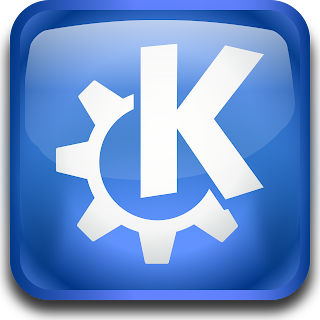KDE
KDE, As stated previously, KDE provides much more than just a graphical window manager or launch environment. It provides many integrated features that are designed to make it easier to work in a graphical environment.
First and foremost, KDE provides an object-oriented environment in which to work. Instead of composing and typing commands at a shell prompt, you manipulate the objects on your system using the desktop or file manager windows. In KDE, you treat things as objects that can be accessed, manipulated, or combined by directly touching or moving them (clicking or dragging them). For example, to work on a document, click the document and it opens the correct application. To print a document, drag the document and drop it onto a printer icon. To examine the contents of a floppy, click the floppy device on your desktop.
This object orientation is provided by a sophisticated file-system, as well as by rigorous adherence (on the part of application authors) to standards that enable KDE applications to interact in intelligent ways.
KDE enables you to control a whole range of options to customize the appearance and functionality of the desktop. You can change the appearance of many things-the desktop backgrounds, the title bar buttons, or the icons-for the individuals filesystem items themselves. you can also change behavior of KDE to suit your testes by adjusting such things as the focus policy (which determines how windows become selected) or the default application for certain types of files. Finally, you can alter the contents of the desktop itself-or the panel or applications menu-to much the set of programs or files that you use on a day-to-day basis.
KDE allows for completely graphical configuration of all these aspects. This is in stark contrast to many other window managers in Linux, where you often have to edit text files by hand and restart the window manager to accomplish the same thing.
Another important aspect of KDE is that it provides a single framework for application development. All KDE applications share a highly consistent look and feel because they use the Qt graphical library to provide similar looking and functioning buttons, menus, controls, and other window items. Nevertheless, the KDE team has put together application style guidelines as well to help make sure that KDE applications look and behave consistently. For example, all KDE applications have a menu item located on the right side of the main application menu for accessing the program's online help. All the online help follows a consistent layout and style. Similar icons are used across all the KDE applications for buttons with similar functionality. Although these might seem like small things, when taken in the aggregate, this uniformity contributes to your ability to easily use KDE applications because you don't have to re-learn interface details from one application to the next.
If you are familiar with object-oriented programming (OOP), you might be interested to know that nearly all KDE applications derive from a single C++ class: KApplication. By adhering to good OOP practices, KDE has made it fairly easy to develop a program that follows the KDE standards, and automatically inherits many configuration, interoperability, and internationalization features.
Finally, because of the massive effort that has gone into KDE, numerous applications are already available for it. The KDE and Qt libraries provide a foundation for rapid development of new applications that conform to KDE requirements. KDE applications are rich in functionality, there are many of them available, and more are being developed every day.





0 Comments